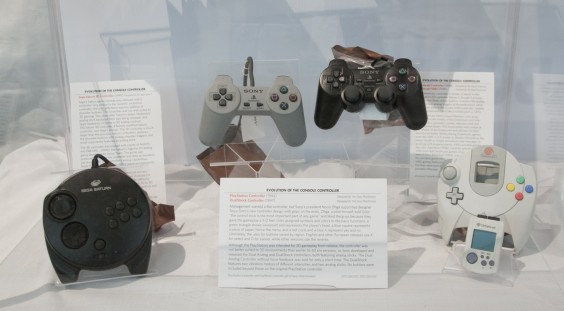Evolution of the Console Controller – The Analog Era
Read more: Super Mario 64 – Nintendo 64 – Sega Saturn 3D – Sony PlayStation DualShock – Sega DreamCast – Wii Classic
Digital controls can send only “on” or “off” to the receiver. Analog controls can send a continuous range of values, allowing speed increases as well as precise placement on a grid. Analog buttons can tell not only that they’re being pushed but also how much they’re being pushed. The sticks and triggers on the Xbox 360 controller are excellent examples of analog inputs.
Though the first video game console to include an analog controller was the Atari 5200 (1982), analog control did not become common in console controls until the fifth console generation, best known through the PlayStation, Nintendo 64, and Sega Saturn.
The transition period from digital to analog, accompanied at the same time by the transition from 2D to 3D, was an awkward adolescence for gaming controls. Game makers wanted their games to do things that controllers couldn’t do gracefully. Analog control is what allowed 3D gaming to advance from often frustrating to the wonderment of games like Super Mario 64. Gradations in movement like tiptoeing through sprinting, movement in 360 degrees, panning a camera at various speeds, choosing the degree to which a vehicle should turn – these and many more basic 3D gaming experiences are possible only with analog input.
Read more: Super Mario 64 – Nintendo 64 – Sega Saturn 3D – Sony PlayStation DualShock – Sega DreamCast – Wii Classic
Back to D-Pad Era – Forward to Modern Era

